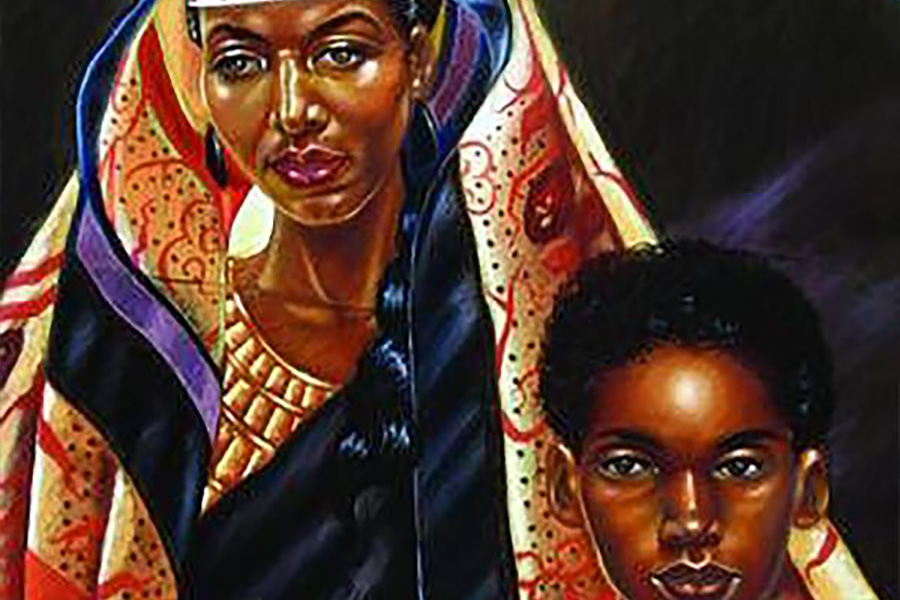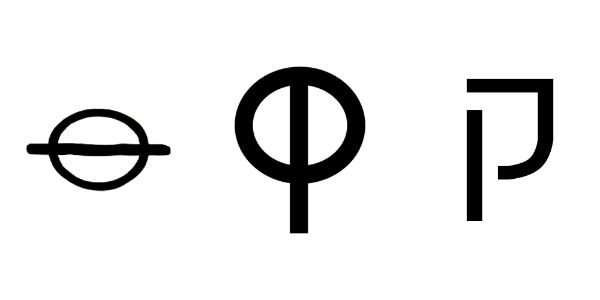The word dabar (𐤃𐤁𐤓) means “speak” meaning to utter words or articulate sounds with the ordinary voice; talk.
The Paleo-Hebrew language or the original language of the Ābarayam is one spoken with an emphasis on the rauakh (breath, wind, spirit). With the language of the Ābarayam, each letter has a meaning and a number associated with it that adds meaning to each word they’re used with. Below you will be able to learn more about the letter in Ancient Hebrew, Yiddish Hebrew, Greek, and much more.
Letter Meanings
| Letter | Meaning |
|---|---|
| 𐤃 (d) – da | Tent door, pathway |
| 𐤁 (b) – ba | House, family, “in” |
| 𐤓 (r) – ra | head and person, man, beginning, top, rule, inheritance, possession |
| Ābarayat Number | 206 = 4 (d) + 2 (b) + 200 (r) |
| Hebrew Gematria | |
| English Gematria | |
| Simple Gematria |
Based on the meaning of the letters the word could be defined as:
- “pathway of family to posession”
- “pathway in beginning”
- “door of family to inheritance”
Definitions for 𐤃𐤁𐤓 / dabar
| Language | Word | Transliteration | Pronunciation | Definition |
|---|---|---|---|---|
| Ābarayat | 𐤃𐤁𐤓 | dabar | daw-bar | to speak, assert, counsel, proclaim, pronounce, answer. |
| English | speak | speak | speek | to utter words or articulate sounds with the ordinary voice; talk. |
| Hebrew | דָבַר | dabar | daw-bar’ | to speak, speech, word |
| Arabic | تحدث | tahadath | taw-ha-dath | talk, speak, converse, tell, broadcast, jaw, sing out, discourse, yarn |
| Greek | λέγω or λόγος | legó or logos | leg’-o or log’-os |
Images for 𐤃𐤁𐤓 / dabar


Definitions for 𐤃𐤁𐤓𐤉 / dabaray
When adding the 𐤉 (yad) to the end of a word, it creates a possessive of the original word. It can either signify “my…” or identify a member of a nation. For example, 𐤏𐤁𐤓 (Ābar) is the progenitor, but 𐤏𐤁𐤓𐤉 (Ābaray) is the singular descendant of him also known as a Hebrew.
| Language | Word | Transliteration | Pronunciation | Definition |
|---|---|---|---|---|
| Ābarayat | 𐤃𐤁𐤓𐤉 | dabaray | daw-baw-rey | speech |
| English | speech | speech | speech | the act of speaking |
| Hebrew | ||||
| Arabic | ||||
| Greek |
Images for 𐤃𐤁𐤓𐤉 / dabaray


Definitions for 𐤃𐤁𐤓𐤉𐤌 / dabarayam
When adding the 𐤌 (mayam) after the 𐤉 (yad) to the end of a word, it creates a plural of the original word. It can identify multiple members of a nation. For example, 𐤏𐤁𐤓 (Ābar) is the progenitor, but 𐤏𐤁𐤓𐤉𐤌 (Ābarayam) are the plural descendants of him also known as Hebrews.
| Language | Word | Transliteration | Pronunciation | Definition |
|---|---|---|---|---|
| Ābarayat | 𐤃𐤁𐤓𐤉𐤌 | dabarayam | daw-bara-yawm | things |
| English | things | things | things | a material object without life or consciousness; an inanimate object. |
| Hebrew | ||||
| Arabic | ||||
| Greek |
Images for 𐤃𐤁𐤓𐤉𐤌 / dabarayam


Definitions for 𐤃𐤁𐤓𐤉𐤕 / dabarayat
When adding the 𐤕 (tau) after the 𐤉 (yad) to the end of a word, it creates a plural of the original word. It identifies the language or a sign of a nation’s existence. For example, 𐤏𐤁𐤓 (Ābar) is the progenitor, but 𐤏𐤁𐤓𐤉𐤕 (Ābarayat) is the language of him also known as Paleo-Hebrew language.
| Language | Word | Transliteration | Pronunciation | Definition |
|---|---|---|---|---|
| Ābarayat | 𐤃𐤁𐤓𐤉𐤕 | dabarayat | daw-bara-yawt | anonymous |
| English | anonymous | anonymous | uh-non-uh-muhs | without any name acknowledged, as that of author, contributor, or the like: |
| Hebrew | ||||
| Arabic | ||||
| Greek |
Images for 𐤃𐤁𐤓𐤉𐤕 / dabarayat


Classification
You can continue your studies of the words by viewing Strong’s entries for:




